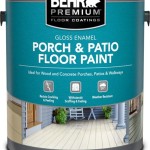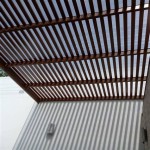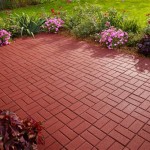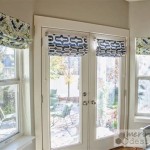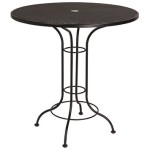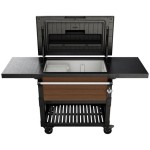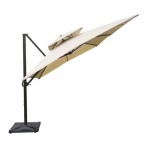Even Embers Pellet Fueled Patio Heater: A Comprehensive Overview
The Even Embers Pellet Fueled Patio Heater represents a modern approach to outdoor heating, offering a blend of efficiency, convenience, and environmental considerations. Unlike traditional propane or electric heaters, this type utilizes wood pellets as its primary fuel source, presenting a unique set of advantages and disadvantages that warrant a detailed examination. This article will delve into the various aspects of the Even Embers Pellet Fueled Patio Heater, covering its functionality, benefits, drawbacks, operational considerations, and comparisons with alternative heating solutions.
Understanding the basic principles of how a pellet-fueled patio heater operates is crucial. The unit typically consists of a pellet hopper, an auger, a combustion chamber, a heat exchanger, and a flue or exhaust system. The pellet hopper stores the wood pellets, which are then fed into the combustion chamber by an auger, a screw-like mechanism that regulates the flow of fuel. Inside the combustion chamber, the pellets are ignited, producing heat. This heat is then transferred to the surrounding air through a heat exchanger, which is designed to maximize the surface area for heat dissipation. The resulting exhaust gases are vented through a flue, ensuring safe operation.
The electronic components play a vital role in the operation of the Even Embers Pellet Fueled Patio Heater. An electronic control system manages the auger speed, fan speed, and ignition process. This allows for precise temperature control and efficient fuel consumption. The system often includes safety features such as overheat protection and automatic shut-off mechanisms, which are paramount for safe and reliable operation.
Key Point 1: Efficiency and Environmental Impact
One of the primary advantages of the Even Embers Pellet Fueled Patio Heater is its potential for higher efficiency compared to propane heaters. Wood pellets are a renewable resource, often made from recycled wood waste products. When burned efficiently, they can produce a significant amount of heat with relatively low emissions. The combustion process in a well-designed pellet heater is more complete than that of propane heaters, resulting in fewer unburned hydrocarbons and reduced carbon monoxide emissions.
The carbon footprint associated with pellet heaters is a complex issue. While burning wood pellets does release carbon dioxide into the atmosphere, this carbon was originally absorbed by the trees during their growth. If the pellets are sourced from sustainably managed forests, the overall carbon cycle can be considered more neutral than that of fossil fuels like propane. The production and transportation of pellets also contribute to the overall carbon footprint, but this is often lower than the footprint associated with producing and transporting propane.
However, it's important to note that not all wood pellets are created equal. The quality of the pellets can significantly impact the heater's efficiency and emissions. High-quality pellets are typically made from hardwoods and are denser, resulting in a higher BTU (British Thermal Unit) output and cleaner burning. Pellets with high moisture content or contaminants can reduce efficiency and increase emissions.
Furthermore, the energy required to manufacture and transport the pellets must be factored into the overall environmental assessment. Choosing locally sourced pellets can help minimize the transportation component of the carbon footprint. Proper storage of pellets is also essential to prevent moisture absorption, which can degrade their quality and reduce their heating value.
Key Point 2: Cost Considerations and Operational Factors
The initial cost of an Even Embers Pellet Fueled Patio Heater can be a significant factor for potential buyers. Pellet heaters often have a higher upfront cost compared to propane or electric heaters. However, the long-term operating costs can be lower, depending on the price of wood pellets relative to propane or electricity in a given region. The cost of wood pellets can fluctuate depending on factors such as seasonal demand, transportation costs, and regional availability.
Operational factors also play a crucial role in the overall cost-effectiveness of the heater. Proper maintenance, including regular cleaning of the combustion chamber and flue, is essential for maintaining optimal efficiency and preventing breakdowns. The auger mechanism may require periodic lubrication to ensure smooth operation. The electronic control system should also be checked regularly to ensure that it is functioning correctly.
The availability of wood pellets is another important consideration. In some regions, wood pellets may be readily available at local hardware stores or home improvement centers. In other areas, they may need to be ordered online or sourced from specialized suppliers. It is essential to ensure a reliable supply of pellets, especially during peak heating seasons.
The storage of wood pellets also requires careful planning. Pellets should be stored in a dry, sheltered location to prevent moisture absorption. Moisture can cause the pellets to swell and crumble, making them unsuitable for use in the heater. A waterproof container or shed is ideal for storing pellets.
Key Point 3: Safety and User Experience
Safety is paramount when operating any type of heating appliance, including pellet-fueled patio heaters. The Even Embers Pellet Fueled Patio Heater incorporates safety features such as overheat protection, automatic shut-off mechanisms, and tip-over sensors. These features are designed to prevent accidents and ensure safe operation. However, it is crucial to follow all manufacturer's instructions and guidelines to minimize the risk of hazards.
Proper ventilation is essential when using a pellet heater. While the exhaust gases are vented through a flue, it is still important to ensure adequate airflow around the heater to prevent the buildup of carbon monoxide. The heater should never be used in enclosed spaces or areas with limited ventilation.
The user experience of a pellet-fueled patio heater can vary depending on the model and features. Some models offer remote control functionality, allowing users to adjust the temperature and settings from a distance. Others have built-in timers that can be programmed to turn the heater on or off at specific times. The noise level of the heater can also be a factor for some users. Some pellet heaters can produce a noticeable hum from the auger motor and fan.
Lighting the pellet heater typically involves pressing a button or switch to activate the ignition system. Some models have automatic ignition systems, while others require manual lighting using a fire starter or gel. Once the pellets are ignited, the heater will gradually warm up and begin to radiate heat. The time it takes to reach the desired temperature can vary depending on the model and the ambient temperature.
Cleaning the pellet heater is a necessary part of routine maintenance. The combustion chamber and flue should be cleaned regularly to remove ash and creosote buildup. A vacuum cleaner or brush can be used to remove debris from the combustion chamber. The flue may require a specialized chimney brush for thorough cleaning. Regular cleaning will help maintain the heater's efficiency and prevent potential fire hazards.
Compared to propane heaters, pellet heaters may require more frequent refueling. The pellet hopper typically needs to be refilled every few hours, depending on the heat setting and the size of the hopper. This can be a consideration for users who prefer a more hands-off approach to heating.
Another aspect of the user experience is the aesthetic appeal of the heater. The Even Embers Pellet Fueled Patio Heater is available in various designs and finishes to complement different outdoor decor styles. Some models feature a decorative flame effect, adding to the ambiance of the patio area.
In summary, the Even Embers Pellet Fueled Patio Heater offers a compelling alternative to traditional heating solutions, with its potential for efficiency, environmental benefits, and unique user experience. However, careful consideration of the cost, operational factors, safety aspects, and personal preferences is crucial before making a purchase decision. By understanding the nuances of this technology, consumers can make informed choices and enjoy the warmth and comfort of their outdoor spaces.

Even Embers Pellet Fueled Patio Heater With 1 Glass Panel 100 Sq Ft 70 000 Btu

Even Embers Pellet Fueled Patio Heater Cover

Even Embers Pellet Fueled Patio Heater

Even Embers Pellet Fueled Patio Heater Cover

Even Embers Pellet Fueled Patio Heater Cover At Tractor Supply Co

Even Embers Wood Pellet Patio Heater Lumberjack Distributor

Even Embers Pellet Fueled Patio Heater 70 000 Total Btu S 25 Lb Hopper For Up To 6 Hrs Of Heat

Even Embers Pellet Chiminea 100 Sq Ft 70 000 Btu

Even Embers Pellet Fueled Patio Heater Cover

Pellet Fueled Patio Heater Cover Ebay


